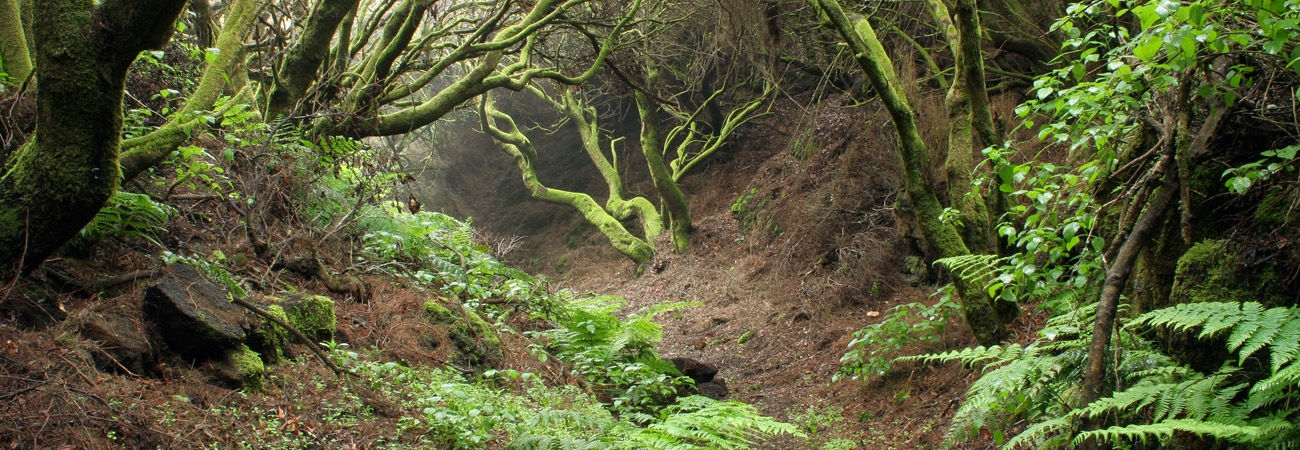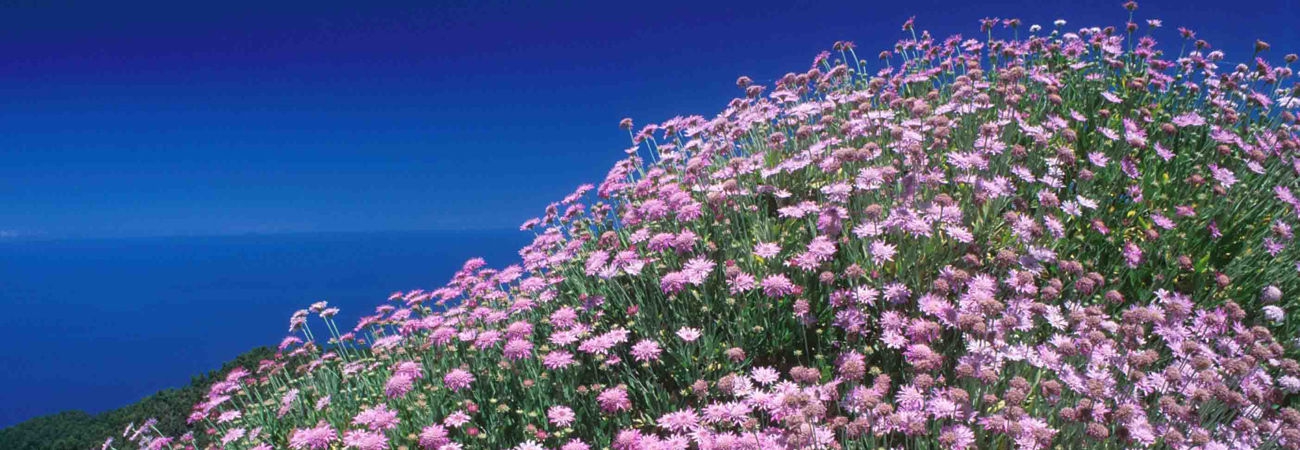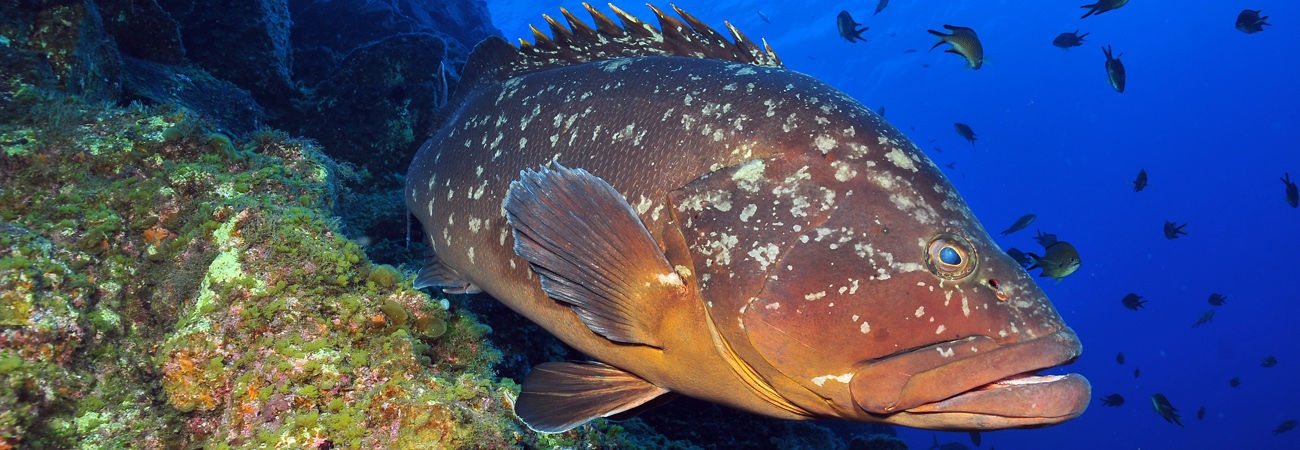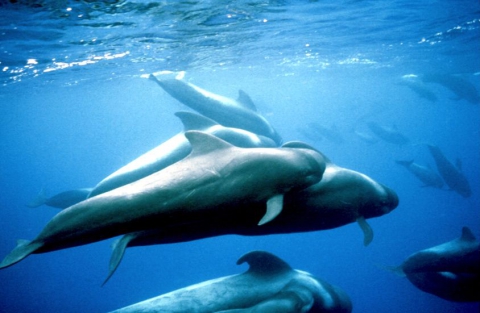Marine faune
The ichthyofauna of the Canary Islands is made up of elements from the Atlantic, the Mediterranean, tropical and sub-tropical zones and Macaronesia, giving an enormous variety of species distributed according to substrate or depth of water.
The most abundant fish over rocky bottoms are: parrot fish (Sparrisoma cretense), dusky grouper (Epinephelus guaza), comb grouper (Mycteroperca rubra), saupe (Sarpa sarpa), white bream (Diplodus sargus), Conger eel (Conger conger), Mediterranean moray eel (Muraena helena and Lycodontis spp.), blacktail comber (Serranus cabrilla and S. atricauda), glasseye (Priacanthus cruentatus), scorpion fish (Scorpaena spp.), goldeneye perch (Beryx spendens) and wreckfish (Polyprion americanus). On bottoms of sand and stone, you find dentex (Dentex spp.), Couch's sea bream (Sparus pagrus), common sea bream (Pagellus spp.), marmor bream (Lithognathus mormyrus), black bream (Spondyliosoma cantharus) and meagre (Argyrosomus regius). On bottoms of mud and sand, you find: striped red mullet (Mullus spp.), stingray (Dasyatis pastinaca), electric rays (Torpedo spp.), angel sharks (Squatina spp.), houndshark ( Mustellus mustellus and Galieorhinus gleus) and morid cod (Mora moro). In the pelagic ecosystem of the Canary Islands, both coastal and oceanic pelagic species are represented: Among the oceanic species, you can find some tropical tuna species at some times of the year, such as bigeye tuna (Thunnus obesus), yellowfin tuna (Thunnus albacares) and the skipjack tuna (Katsumonus pelamis, along with species from more temperate waters, like the bluefin tuna and albacore. The coast of Tenerife conserves marine ecosystems with a large number of endemic species. Interesting species of turtles are also recorded, such as the loggerhead (Caretta caretta) and there is a permanent population of pilot whales of the southern coast of the island. These whales measure 6 to 8 metres and weigh between 800 and 3000 Kg. and live in groups of between 10 and 200.










